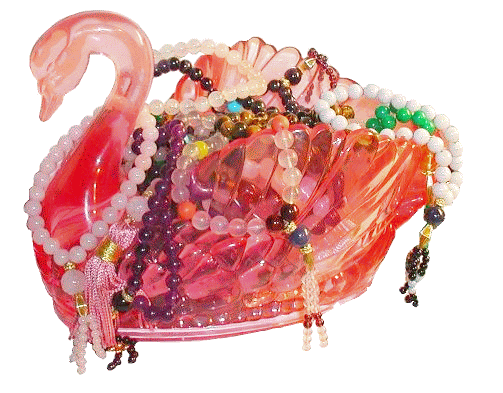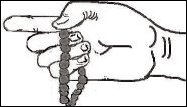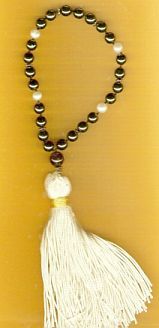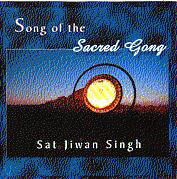


MALA BEADS AS PRAYER BEADS
FOR CHANTING THE HOLY NAMES OF THE CREATOR
Mala is the Sanskrit term meaning garland or necklace.
Hinduism, one of the worlds oldest religions, is the origin of the mala prayer beads. Hindus who converted to Buddhism took the Mala prayer beads with them and it has since become part of many religions including the Sikh and Muslin religions.
Nine is the sacred number and common denominator in mala prayer beads. The most common malas are 27, 54 or 108 beads in length. The Hindu sacred number of 108, predating Buddhism, is the classical number of the Hindu names assigned to a Hindu Deity or God
Regardless of the number of beads of the mala it is important that if a mala is used to count mantras with devotion. Japa or chanting into the sound current creates Tapa the spiritual heat. It becomes Dharma, which leads to the path of God. Mala beads can be used in any religion or spiritual tradition.
One mantra- one bead. Mantras are often repeated hundreds or thousands of times at one sitting. Mantras are sacred sounds that reflect the spiritual teaching or religion they represent. The person chanting or the instructor giving the meditation according to tradition or spiritual intuition decides the Name or Names of God chanted.

When the beads are passed over the ring finger calmness is attained. When using the mala it is important that you turn around at the Guru Bead and go the other direction. Never cross the Guru Bead.
Your fingers contain nadis (vital energy centers) that directly connect to your brain. Counting should always begin with the bead next to the Guru Bead. Each time the mantra is repeated, the fingers move to the next bead. One bead is counted for each recitation of the mantra. Do not cross the Guru Bead with the mantra - turn the mala 180 degrees and begin chanting. When the beads are passed over the ring finger calmness is attained.
Japa is a form of mantra (repetition of Gods name) that will eat up defeat and creates Tapa (heat which burns up karma) and Sanjam the technology---how to do it.
Hindu tradition holds that the correct way to use a mala is with the right hand, with the thumb flicking one bead to the next, and with the mala wrapped over the middle finger. Generally do not use the index finger as in ancient times it was thought use of the index finger was bad mannered and also facilitates karma.

Buddhists generally hold the mala in the left hand. The first bead is held between the index finger and thumb, and with each count the thumb pulls another bead in place over the index finger. After completing a full circuit of the mala, the practitioner flips the mala around 180 degrees. Continuing over the guru bead is like crossing your teacher.
In many Tibetan malas there are divider beads of a different color, spaced equally along the mala's length.
The tassel found at the end of many mala beads represent enlightenment.

As the mala found it way to other religions this formula changed according to the region, religion or spiritual tradition.
You can wear malas around the neck or wrist or keep them in a pouch that is frequently made of silk or cotton or other natural materials.
Mantras are often repeated hundreds or even thousands of times. The mala is used so that one can think about the meaning of the mantra as it is chanted rather than thinking about counting the repetitions. In some cultures specific mantras and or beads are used to create specific effects.
Malas are made from a wide variety of materials including but not limited to
wood, including sandalwood, seed including lotus seed, gemstones, crystals,
steel, gold, silver, plastic, glass and animal bones are frequently used in
making mala beads. Semi-precious healing stone mala beads have been used for
physical healing and healing of situations since ancient times.
Malas created
from various materials are beneficial as an aid in healing or developing
qualities and situations that are desirable particulary when used with a
complimentary mantra. Again this varies from tradition to tradition. The shape
while generally round can vary from tradition to tradition.
On this basic page about mala beads the various healing and development aspects of mala beads is too detailed but I may tackle that subject later. I hope you found my page on mala beads beneficial. As a footnote most power beads are usually valid wrist mala beads.
The mala can be used with different fingers of the hand that signify different parts of the brain. This varies according to tradtion.

Ancient Song of the Sacred Gong Easy Healing Meditation CD by Sat Jiwan Singh - Free Shipping Worldwide

We accept these forms of payments thru PAYPAL - if you want to send a money order e-mail me at dayakaurji@yahoo.com
I have over 40 years experience using malas. I have a malas in stock at a very good price. Click here to see them.

